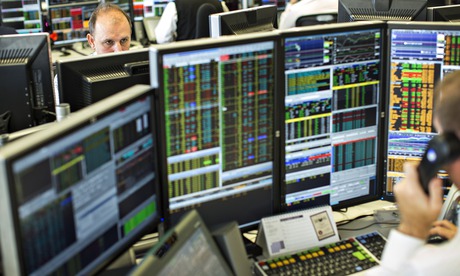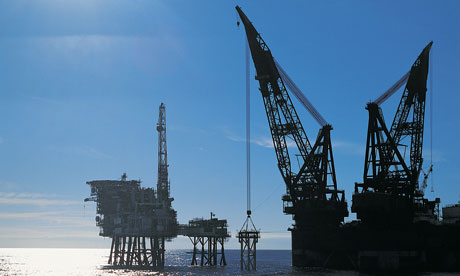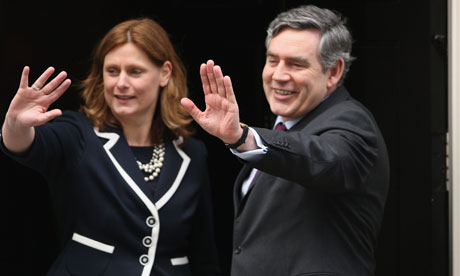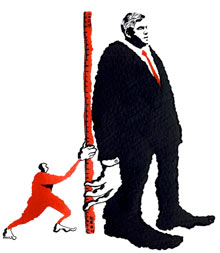Jayati Ghosh in The Guardian

Illustration by Robert G Fresson
Whatever happened to emerging markets? Brics, Mints, whatever global investors call them: For a while it appeared as if countries such as Brazil, India and Turkey had secure and buoyant futures, regardless of the travails of advanced economies. There was much trumpeting of their advantages, such as the demographic bulges producing young populations. Few asked about the nature of the growth, or whether it could last. The euphoria spread, leading to large private-capital inflows that pushed up asset prices in these countries.
That already seems a long time ago, as investor opinion has done yet another volte face. Investors who were slow to read the tea leaves during the boom times have now taken fright. In just 13 months, capital outflows from these countries have crossed $1tn. Stock markets have tanked across countries as distant and diverse as Malaysia, India, South Africa and Brazil; currencies have depreciated; and bond issues are slowing down, with fewer takers.
For a change, this is not being driven by policy in the developed world. Unlike the “taper tantrum” unleashed in mid-2013 by Ben Bernanke, the then US Federal Reserve chairman – when he simply announced the possibility of reducing the massive liquidity stimulus that was being provided in the US – the current skittishness in emerging markets is the fallout of what is happening in China. This is hugely important, not just because of China’s major role in global trade, but because it signifies the end of a particular growth strategy that many other countries were trying to emulate.
The recent travails of China’s economy are well known by now: falling real estate prices put paid to the construction boom, and the subsequent bursting of the stock market bubble was hamfistedly controlled through official measures. But these current difficulties are the outcome of earlier economic strategies that were widely celebrated, when the going was good.
From the early 1990s China adopted an export-led strategy that delivered continuously increasing shares of the world market, fed by relatively low wages and very high rates of investment, enabling massive increases in infrastructure. It led to big increases in inequality and even bigger environmental problems, but the strategy seemed to work – until 2008-09, when exports were hit by the global financial crisis.
Yet even then, China, India and other large emerging markets continued to grow. The talk at the time was that they were already “decoupled” from the west. In reality, China (and much of developing Asia) had simply shifted to a different engine of growth without abandoning the focus on exports. The Chinese authorities could have generated more domestic demand by stimulating consumption through rising wage shares of national income, but this would have threatened their export-driven model. Instead they put their faith in even more accumulation to keep growth rates buoyant.
So the “recovery package” in China essentially encouraged more investment, which was already nearly half of GDP. Provincial governments and public sector enterprises were encouraged to borrow heavily and invest in infrastructure, construction and more production capacity. To utilise the excess capacity, a real estate and construction boom was instigated, fed by lending from public sector banks as well as “shadow banking” activities winked at by regulators. Total debt in China increased fourfold between 2007 and 2014, and the debt-GDP ratio nearly doubled to more than over 280%.
We now know that these debt-driven bubbles end in tears. The property boom began to subside in early 2014, and real estate prices have been stagnant or falling ever since. Chinese investors then shifted to the stock market, which began to sizzle – once again actively encouraged by the Chinese government. The crash that followed has been contained only because the government pulled out all the stops to prevent further falls.
All this comes in the midst of an overall slowdown in China’s economy. Exports fell by around 8% in the year to July. Manufacturing output is falling, and jobs are being shed. Construction activity has almost halted, especially in the proliferating “ghost towns” dotted around the country. Stimulus measures such as interest rate cuts don’t seem to be working. So the recent devaluation of the yuan– which has been dressed up as a “market-friendly” measure – is clearly intended to help revive the economy.
But it will not really help. Demand from the advanced countries – still the driver of Chinese exports and indirectly of exports of other developing countries – will stay sluggish. Meanwhile, China’s slowdown infects other emerging markets across the world as its imports fall even faster than its exports and its currency moves translate into capital outflows in other countries.
The pain is felt by commodity producers and intermediate manufacturers from Brazil to Nigeria and Thailand, with the worst impacts in Asia, where China was the hub of an export-oriented production network. Many of these economies are experiencing collapses of their own property and financial asset bubbles, with negative effects on domestic demand. The febrile behaviour of global finance is making things worse.
This is not the end of the emerging markets, but is – or should be – the end of this growth model. Relying only on exports or debt-driven bubbles to deliver rapid growth cannot work for long. And when the game is finally up, there can be severe political fallout. For developing countries to truly “emerge”, a more inclusive strategy is essential.














